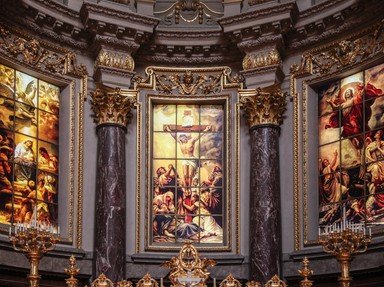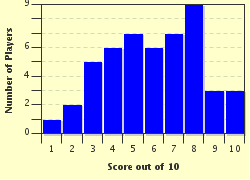Quiz Answer Key and Fun Facts
1. This thirteenth century Italian saint is the patron saint of domestic servants. Living until about the age of sixty, in life this saint served in the same household for almost fifty years. Often invoked in order to find the object shown here, who was this saint?
2. This saint is sometimes associated with the image in the accompanying picture since the word for it in an important language of the Mediterranean world sounds like her name. She is the patron saint of chastity. Who was this saint?
3. This saint served as an early pope in the first century. He is associated with the symbol shown in the accompanying picture as it was used to execute him. Who was this saint?
4. This saint is associated with the image shown in the accompanying picture. A royal, this saint is known for his/her religiousness including joining a religious order after the death of queen/king to whom he/she was married. Who was this saint?
5. This saint was known for his eloquence while he was Archbishop of Constantinople. The picture shows an animal that this saint considered noble. Who was this saint?
6. This tenth century saint may be best known for a Christmas carol that refers to him. He is also the patron saint of a particular country. Who was this saint?
7. This saint is the patron saint of throats, Dalmatia, stone cutters, and wool workers. He was martyred in the fourth century by beheading. Associated with the image in the picture, who was this saint?
8. This saint was the mother of Augustine, fourth century Bishop of Hippo (in North Africa). She is the patron saint of difficult marriages, suffering adultery, and disappointing children. Who was this saint?
9. This saint is the patron saint of soldiers and archers. He lived in southern Gaul (modern France). Who was this saint?
10. Though this picture looks like it should be associated with St. Valentine, the image is also associated with another saint. She is the patron saint of bodily illnesses and headaches.
Source: Author
bernie73
This quiz was reviewed by FunTrivia editor
looney_tunes before going online.
Any errors found in FunTrivia content are routinely corrected through our feedback system.

